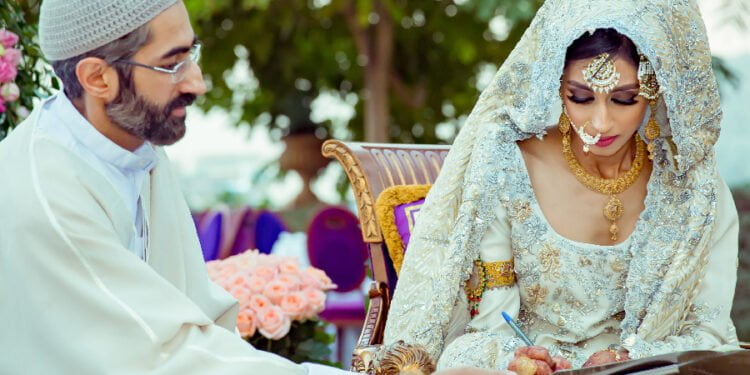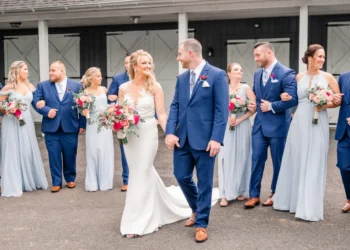Muslim weddings, rich in cultural and religious significance, have witnessed a fascinating evolution over the years. These celebrations maintain steadfast values and traditions, while incorporating modern trends, combining traditional and contemporary influences in a unique way.
1. Muslim Wedding Rituals
Muslim weddings are vibrant ceremonies that celebrate love, commitment, and the merging of two families. Rooted in centuries-old traditions and guided by Islamic principles, these weddings are a beautiful tapestry of cultural customs, religious rituals, and familial bonds.

Muslim weddings are a harmonious blend of tradition, spirituality, and festivity. Each ritual is a brushstroke on the canvas of a couple’s love story, creating a masterpiece that resonates with cultural richness and profound meaning. As we explore the intricate details of these ceremonies, we gain a deeper appreciation for the diversity and beauty that define Muslim wedding rituals.
2. Salatul Ishtikara
In the rich tapestry of Muslim wedding rituals, Salatul Istikhara emerges as a crucial and deeply meaningful practice. Rooted in the Islamic tradition, this spiritual act holds the power to guide individuals on the path to a blessed and harmonious union.

Highlight instances where Istikhara played a crucial role in overcoming challenges or confirming the right path.
3. Imam Zamin
Muslim weddings are a beautiful tapestry of customs, traditions, and rituals that bring two individuals together in the sacred bond of marriage. Among the many rituals that adorn the journey to marital bliss, the ceremony of Imam Zamin holds a special place.

A few days or even a few days before the wedding, the Imam Zamin ceremony is usually held before the big day. The bride’s family, accompanied by close relatives and friends, gathers to perform this sacred ritual.
4. Mangni
This event symbolizes the formal agreement and commitment to the upcoming marriage. It is a joyous occasion where the families come together to bless the couple and announce their intention to be united in holy matrimony.

A central element of Mangni is the exchange of rings between the engaged couple. These rings serve as tangible symbols of their commitment to each other. The groom’s family typically presents a ring to the bride, and vice versa.
5. Manjha
The roots of the Manja ceremony can be traced to diverse cultural influences within the Muslim world. Over time, the Manja ceremony has evolved and integrated into the unique traditions of different Muslim communities.

Beyond its aesthetic and cultural aspects, the Manja ceremony is a time for family bonding and blessings. Elders in the family often share words of wisdom, offer blessings to the couple, and partake in the joyous celebration. This creates a sense of unity and emotional support, reinforcing the familial bonds that are an essential part of Muslim weddings.





